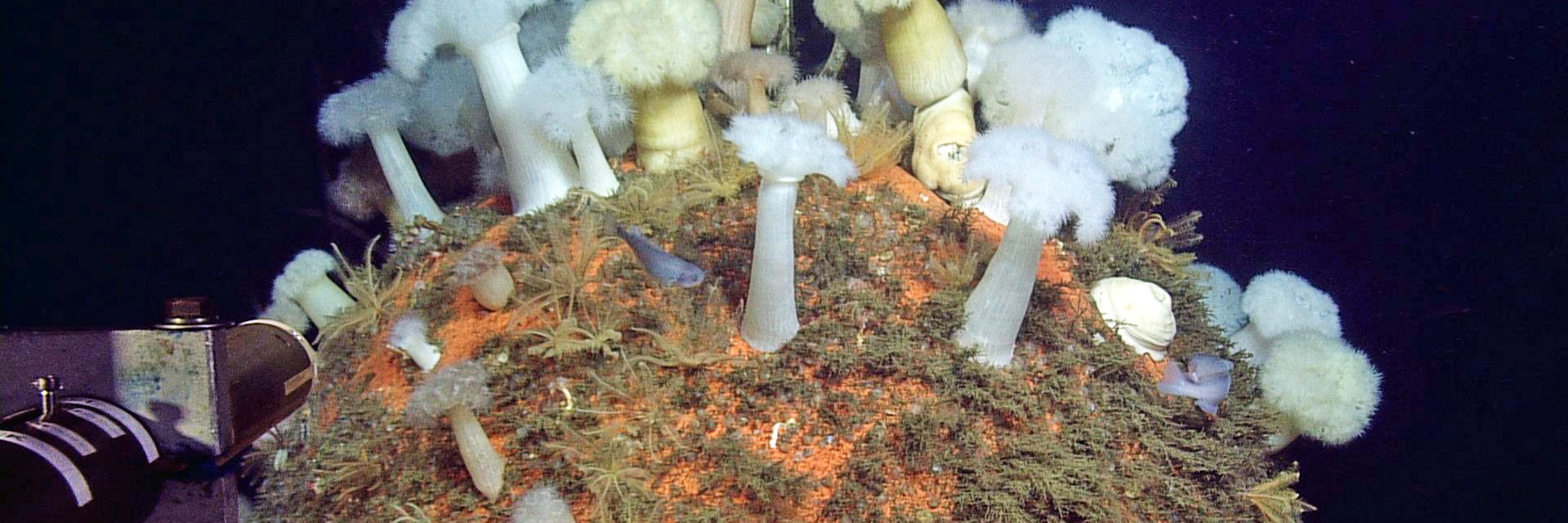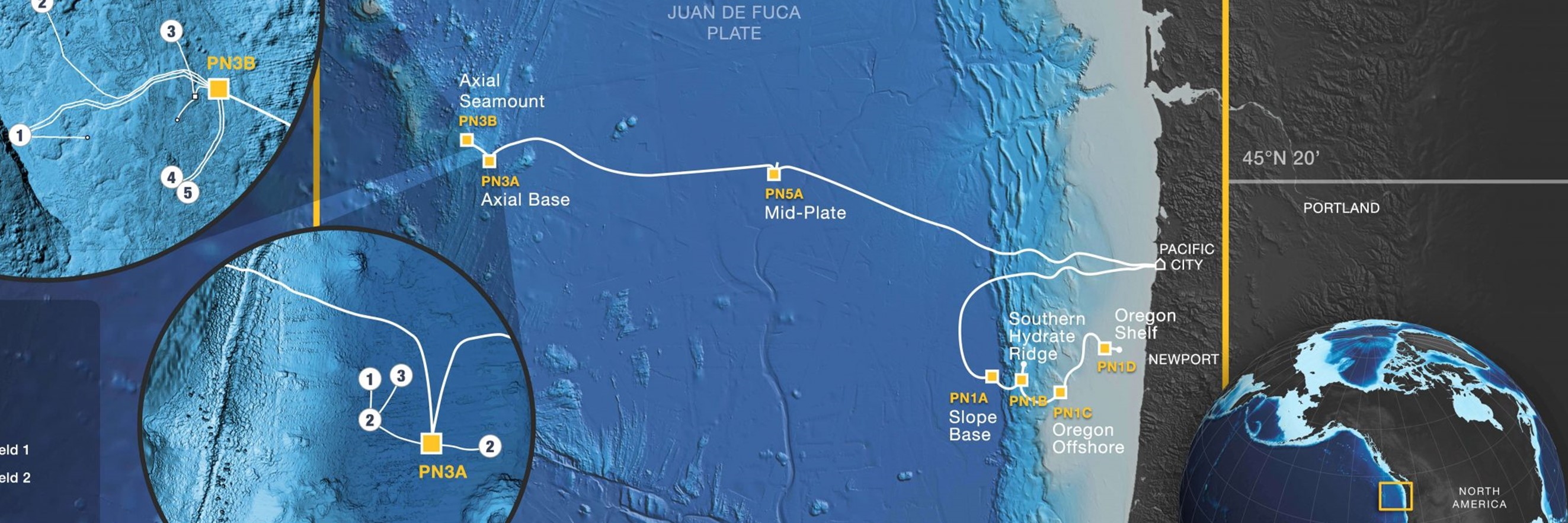
NSF VISIONS ‘22 Expedition
R/V Thomas G. Thompson August 9 – September 15, 2022
From August 9 – September 15, 2022, 8 CSSF team members performed maintenance and installation on the National Science Foundation’s (NSF) Ocean Observatories Initiative’s (OOI) Regional Cabled Array (RCA) for the University of Washington (UW) aboard the UW’s R/V Thomas G. Thompson as part of the VISIONS ’22 expedition. The science team was largely from the University of Washington’s School of Oceanography, with one member from Gray’s Harbour College, and the engineering team was largely from the UW’s Applied Physics Laboratory, with one member from Oregon State University. Guest participants were from the UW, the University of St. Andrews, Woods Hole Oceanographic Institution, Carleton College and the University of Bremen.
VISIONS ’22 had 5 legs, each with its own maintenance objectives. In each leg, ROPOS recovered, deployed then verified the functioning of the instrumentation, all together in a process called a “turn” (or a “Re-&-Re”, as our team calls it, short for “recover and replace”). ROPOS performed maintenance at 6 sites: ‘Oregon Shelf’, ‘Oregon Offshore’, ‘Southern Hydrate Ridge’, ‘Slope Base’, ‘Axial Base’ and ‘Axial Seamount’.
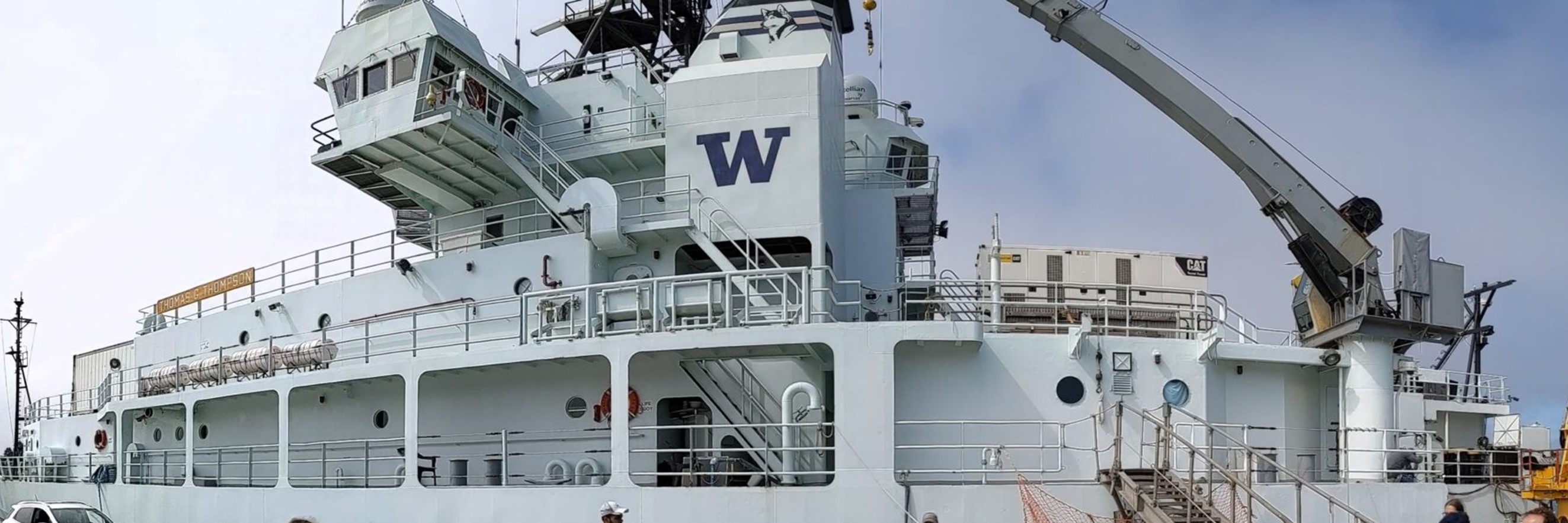
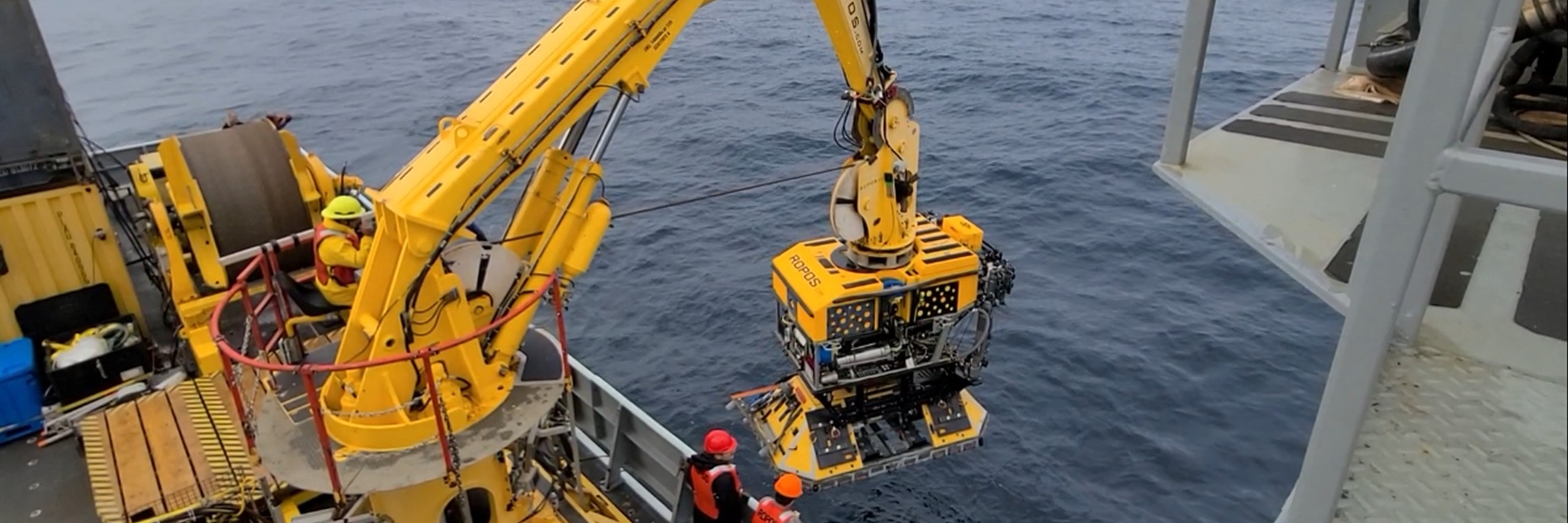
Leg 1: On Leg 1, ROPOS completed more than 5 dives over the course of 8 days. Our first dive was at ‘Slope Base’ to 2906 m, where we turned 2 CTDs on the low-power junction box (LJO1A). Our second dive was to ‘Southern Hydrate Ridge’, where we installed 1 new extension cable at Primary Node (PN1B) at 1241 m depth. This job was particularly important because the cable provides power to all cabled instruments at Primary Node (PN1B) and with the installation of the new extension cable, we were able to successfully restore power for the first time in two years! Our third dive was at ‘Oregon Offshore’ to 588 m, where we swapped out 2 instrument packages on the shallow profiler. Our fourth dive was at ‘Axial Base’ to 2607 m, where we swapped out instrument packages on the shallow profiler and verified 1 CTD. We then transited to ‘Axial Seamount’s’ International District vent field at ~1500 m for a series of dives, where we turned 1 novel in situ hydrothermal fluid and microbial DNA sampler (RAS-PPS) and installed 1 acoustic net that uses cabled and autonomous transponders. All tasks were completed successfully!
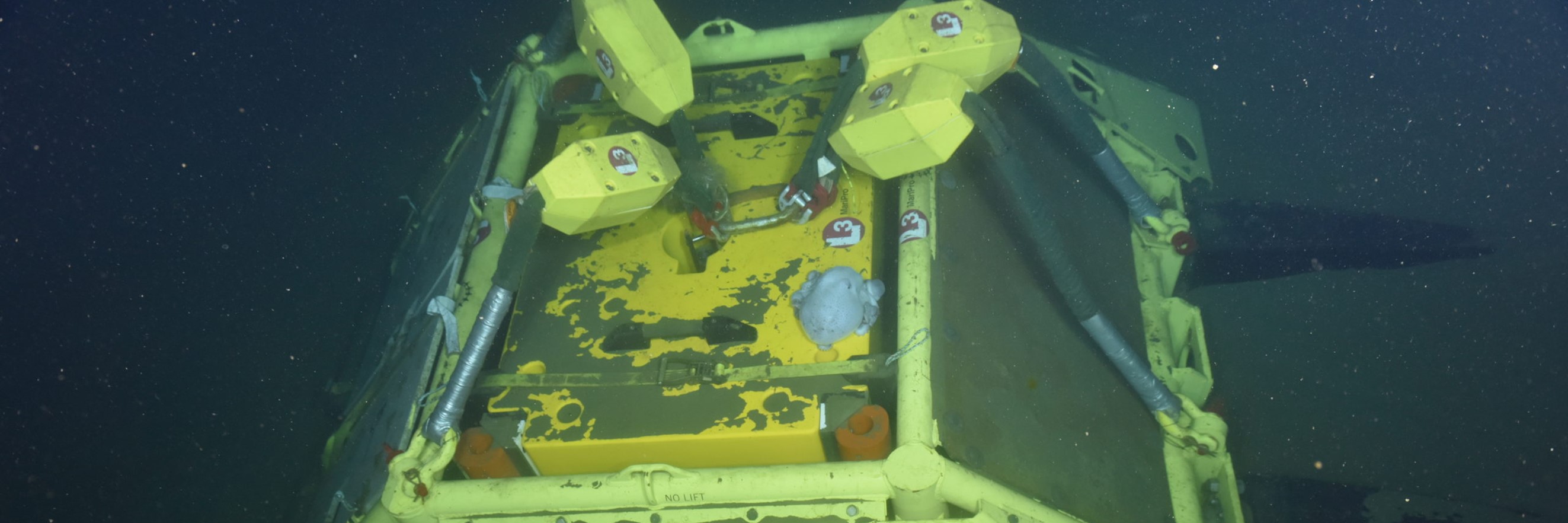
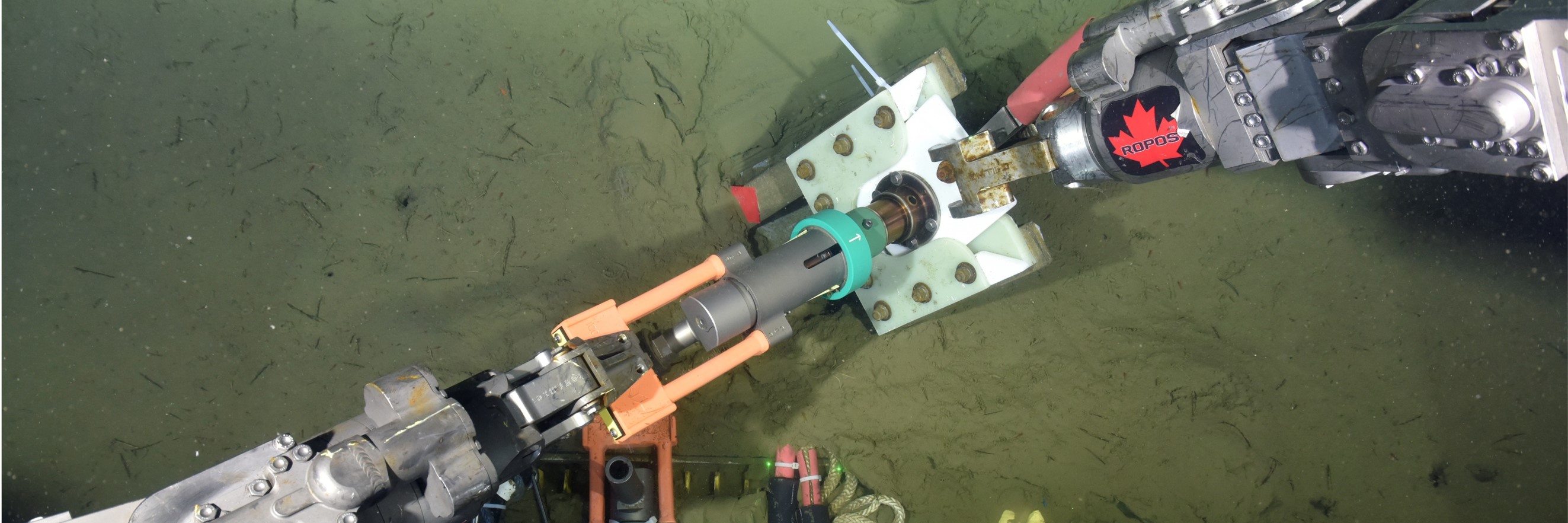
Leg 2: On Leg 2, ROPOS completed 11 dives over the course of 5 days. Our first 5 dives were at ‘Oregon Shelf’, ‘Oregon Slope’ and ‘Southern Hydrate Ridge’. At ‘Oregon Shelf’ 80 m depth, we performed a turn of 1 Benthic Experiment Package (BEP) and 1 bioacoustics sonar instrument. At ‘Oregon Slope’, where we performed 1 turn of a Benthic Experiment Package. Despite the difficult conditions and low visibility all tasks at ‘Oregon Shelf’ and ‘Oregon Slope’ were completed successfully! At ‘Southern Hydrate Ridge’, where we performed: 1 turn of the low-voltage junction box (LV01B), 3 turns of autonomous flow meter instruments, 1 turn of a fluid sampler, 1 turn of a cabled CTD, 1 test and 1 turn of a short period seismometer, inspection and cleaning of the lights and lenses of 1 MARUM 4K camera, cleaning of the sonar heads of the 2 MARUM sonar systems and 1 photomosaic survey. Our next 6 dives were at ‘Oregon Shelf’, ‘Oregon Slope’ and ‘Southern Hydrate Ridge’, where we inspected and cleaned the lights and lenses of 3 OOI digital still cameras and collected 3 sets of fluid samples using ROPOS’ mounted Niskin bottles.
Leg 3: On Leg 3, ROPOS completed 26 dives over the course of 10 days. Our first 8 dives were at ‘Oregon Offshore’ at 576 m, ‘Slope Base’ at 2893 m and ‘Axial Base’ at 2600 m, where we turned 3 Deep Profiler moorings (one at each site: DP01B, DP01A and DP03A, respectively) and performed maintenance. At ‘Oregon Offshore’, as we were cleaning the cable that attached the Deep Profiler mooring to the seafloor, a blue shark nudged one of ROPOS’ lights, causing damage to it. ROPOS was brought back on deck, the light was repaired and we successfully completed the cleaning! For our maintenance at ‘Slope Base’, we recovered 1 instrumented platform interface assembly and 1 profiler science pod and replaced 1 faulted science pod with a functional science pod. For our maintenance at ‘Axial Base’ we turned 1 Horizontal Electrometer Pressure-Inverted Echosounder (HPIES), 1 seafloor pressure sensor, 1 low-power junction box (LJ03A) and its attached CTD-dissolved oxygen tripod, 1 pressure sensor and of optical attenuation and absorption instruments and platforms. Our next 15 dives were at the ‘Axial Seamount’, where we cleaned the lens and lamps of the HD video camera and digital still camera (CAMDS) at the hydrothermal vent named ‘Mushroom’; performed 1 turn of an autonomous osmotic fluid sampler, recovered 2 COVIS thermistor arrays and recovered 2 HOBO in situ temperature probes at the ASHES vent field; conducted an acoustic doppler current profiler (ADCP) site survey of medium-power junction box (MJ03B); performed multiple photomosaic surveys; turned 1 CTD at Central Caldera and installed 6 other HOBO temperature probes in anhydrite- and sulfide-rich hydrothermal chimneys. As our last task, we deployed 4 FETCH tripods to form an acoustic array across Axial Caldera (a crater formed by volcanic activity). The installation of the acoustic array is a first-of-its kind cabled and autonomous acoustic network spanning the central caldera and bounding walls of Axial Seamount!
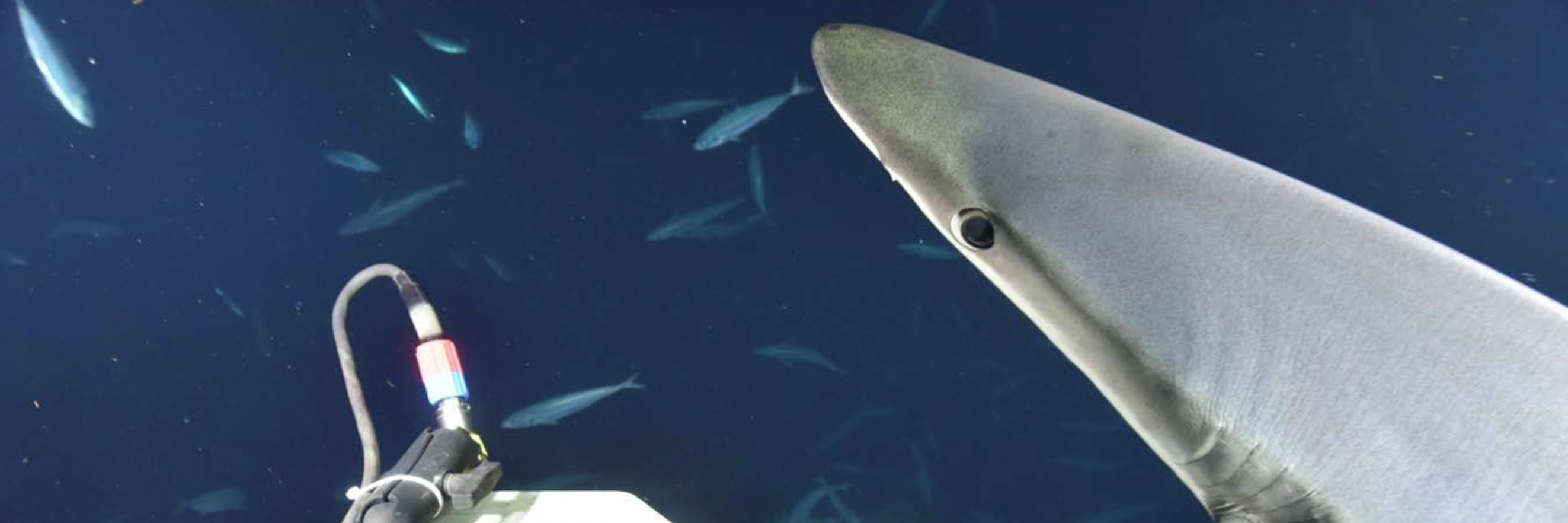
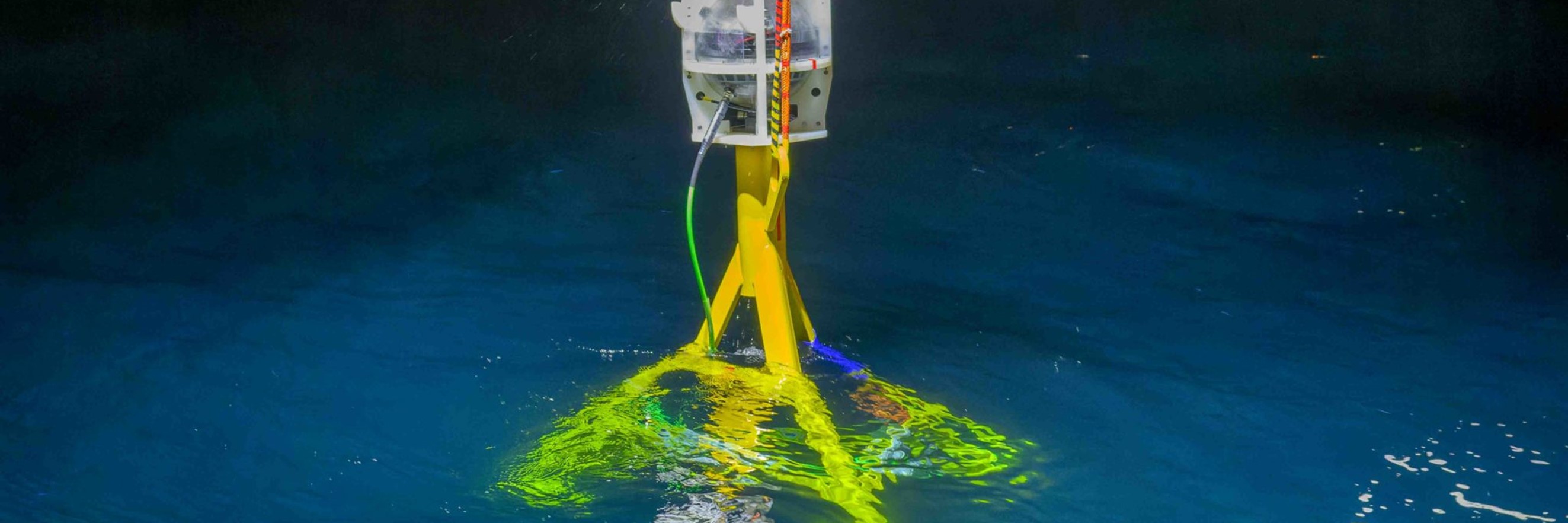
Leg 4: On Leg 4, ROPOS completed 1 dive over the course of 2 days. The dive was at ‘Slope Base’ to 200 m, where we recovered the Shallow Profiler Mooring. The full turn required both Legs 4 and 5 to complete because the recovery and installation processes required separate packages of heavy equipment. We ran into some difficulty in that one of the legs of the Shallow Profiler Mooring could not be freed from the sediment, which was supposed to be able to be easily released and floated to the surface. Despite this challenge, our team persevered and solved the problem by deciding to add a buoy, which helped to pull the leg up; this successfully released the Shallow Profiler Mooring from the sediment and allowed it to float to the surface!
Leg 5: On Leg 5, ROPOS completed 3 dives over the course of 7 days. As a continuation of the turn that begun in Leg 4, we reinstalled the Shallow Profiler Mooring at ‘Slope Base’. This was the first time that a complete recovery and installation of a Shallow Profiler Mooring had been conducted on a Regional Cabled Array expedition!
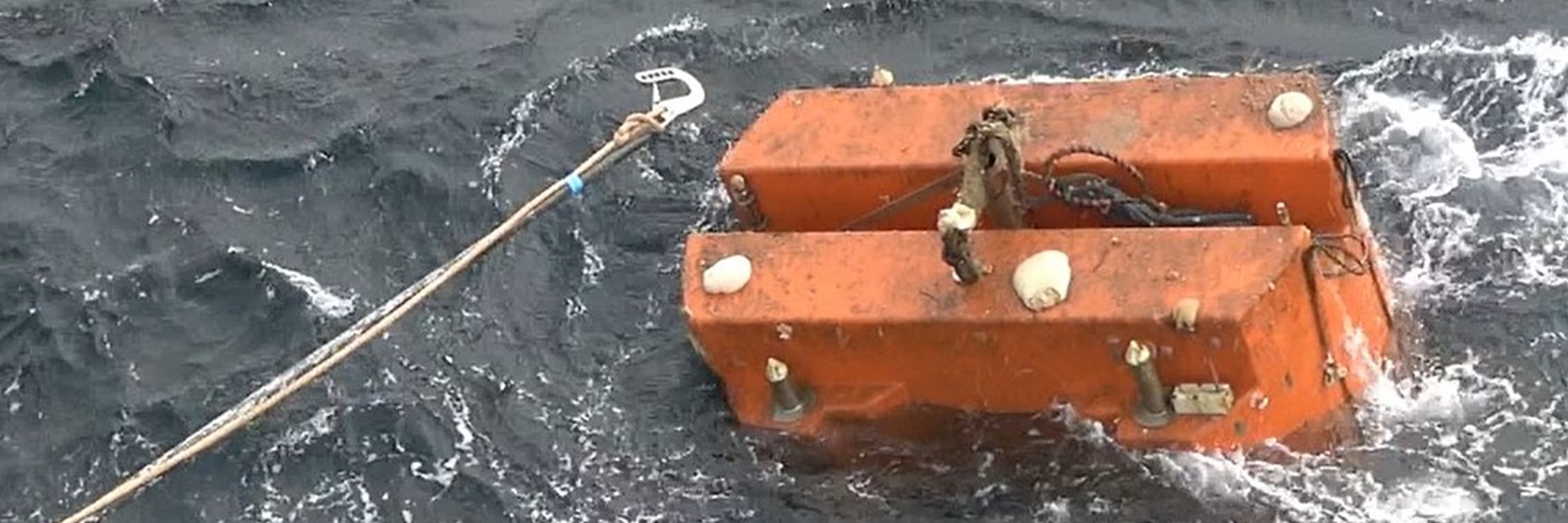
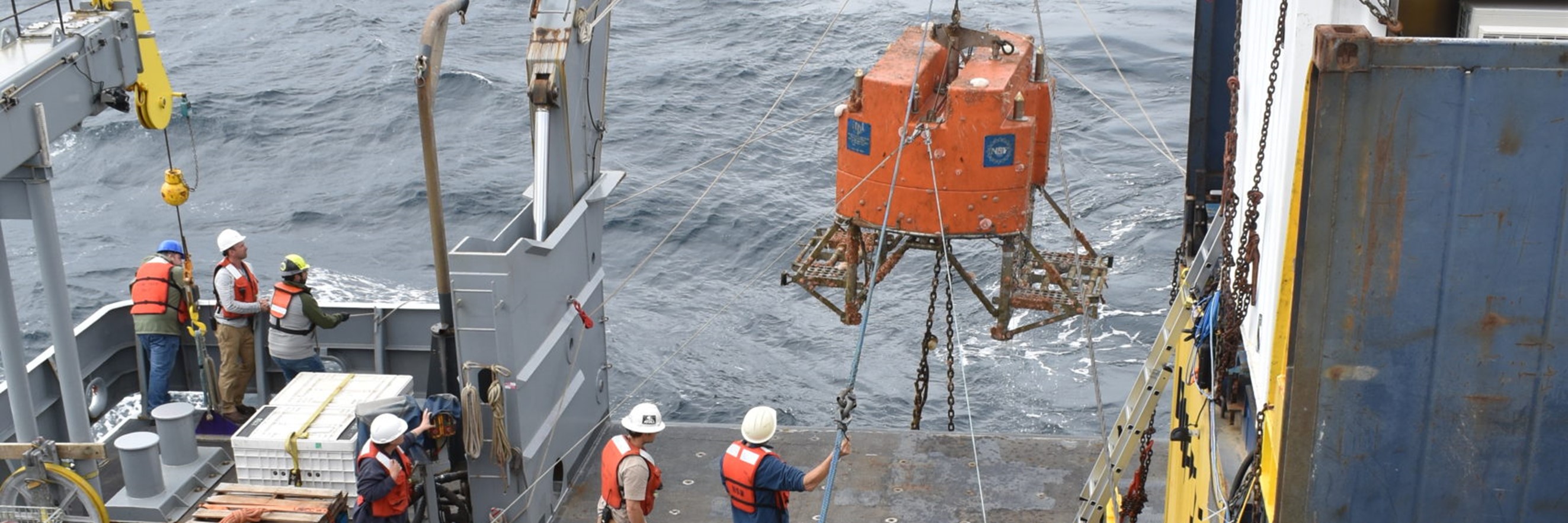
Along with VISIONS ‘11, ‘13, ‘14, and ‘15, VISIONS ‘22 was CSSF’s 5th expedition successfully maintaining the NSF-OOI Regional Cabled Array. On the VISIONS ‘22 expedition, we successfully completed all operations and more!
The NSF-OOI Regional Cabled Array provides real-time streaming of data to shore and allows interactive, adaptive sampling for studies of the geology, oceanography and biology spanning the Juan de Fuca tectonic plate. For the VISIONS ’22 expedition, work outside the maintenance of the NSF-OOI Regional Cabled Array included research on the geological and oceanographic processes associated with eruptions at the Axial Seamount, characterization of microbes and viruses in hydrothermal fluids and quantification of methane emissions at the Southern Hydrate Ridge; research external to the OOI program was funded by both NSF and the German federal government.
Scientific outreach was integral to the VISIONS ’22 expedition. The expedition was live streamed 24/7, with the location of the R/V Thompson shared in real-time. 30 undergraduate and graduate students participated in the ‘VISIONS at-sea’ program, which provided them the opportunity to explore underwater hot springs at the Axial Seamount, cold seeps at Southern Hydrate Ridge and biologically productive waters off the coast of Oregon. They also received an explanation of dive logging procedures and an informational tour of ROPOS during Leg 1 by CSSF’s Operations Manager, Keith Tamburri! Non-for-profit, ‘Exploring by the seat of your pants’, provided virtual outreach events that reached 79 K-12 classrooms in 8 different countries.
The information in this article was synthesized based on multiple sources, including from the cruise blog written by Co-Chief Scientist, Julie Nelson on the OOI Regional Cabled Array website. Photo credits for this article can be found under the ‘Images’ section of the OOI Regional Cabled Array website.
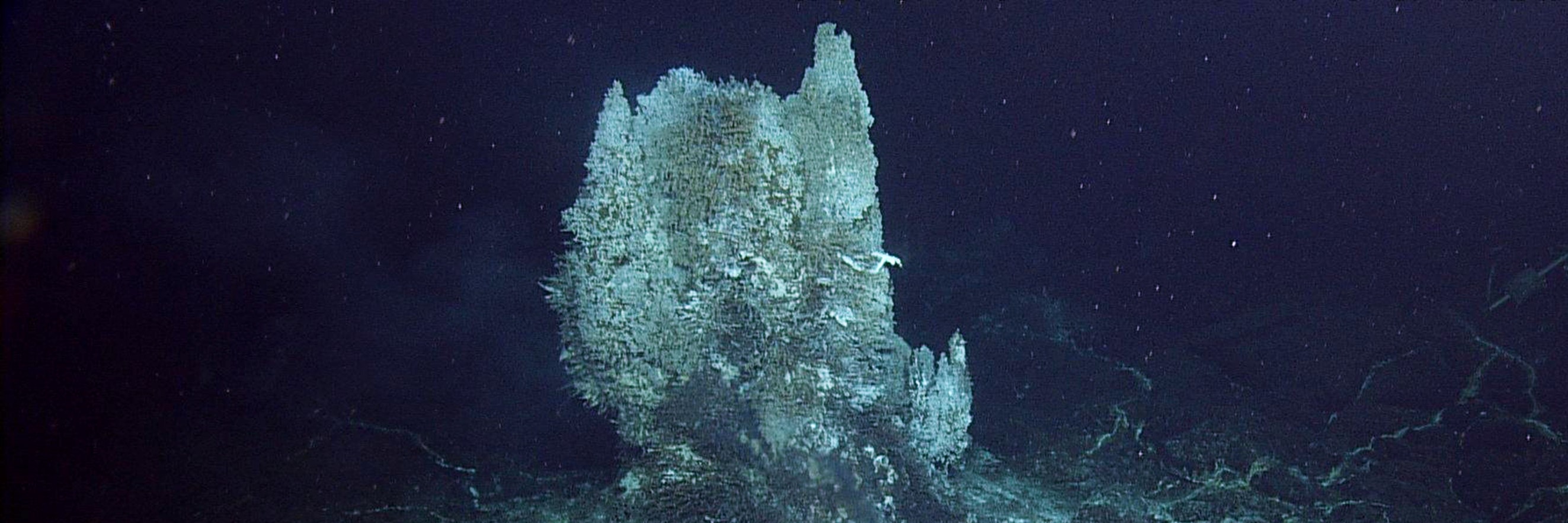
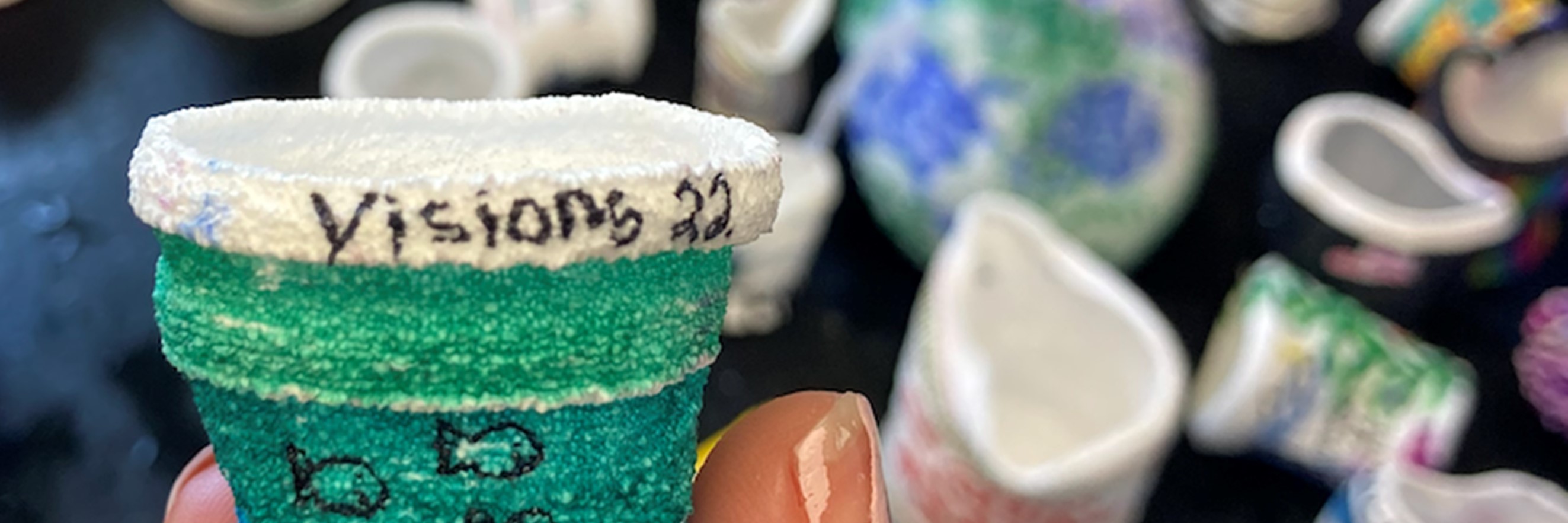
By the Numbers
ROPOS' performance during the expedition
28
Days
28 operational days, ROPOS completed 60 dives, totalling 323 hours submerged, with the deepest at 2900 m.
222
Instruments serviced
1 extension cable and 6 temperature probes installed; 1 benthic experiment package, 2+ optical attenuation and absorption instruments and platforms; 1 Shallow Profiler Mooring, 3 Deep Profiler Moorings, 1 novel in situ hydrothermal fluid and microbial DNA sampler, 2 fluid samplers, 1 CTD-dissolved oxygen tripod, 1 Horizontal Electrometer Pressure-Inverted Echosounder (HPIES), 3 autonomous flow meter instruments, 4 CTDs, 1 short period seismometer, 2 pressure sensors, and 2 low-power junction boxes turned; 3+ instrument packages and 1 science pod swapped; 1 instrumented platform interface assembly, 2 thermistor arrays, and 2 temperature probes recovered; 1 CTD, 1 short-period seismometer, and 4 sets of lights and lenses verified; 1 set of sonar heads, 5 sets of lights and lenses, 1 cable and 1 Deep Profiler Mooring cleaned of biofouling.
1
First-time installation
1 first-of-its kind cabled and autonomous acoustic network with 4 FETCH tripods installed.
9+
Bonus tasks
2+ photomosaic and 2 ADCP surveys conducted. 3 sets of fluid samples collected, 1+ macrofauna samples, and 1+ microbial samples collected.

